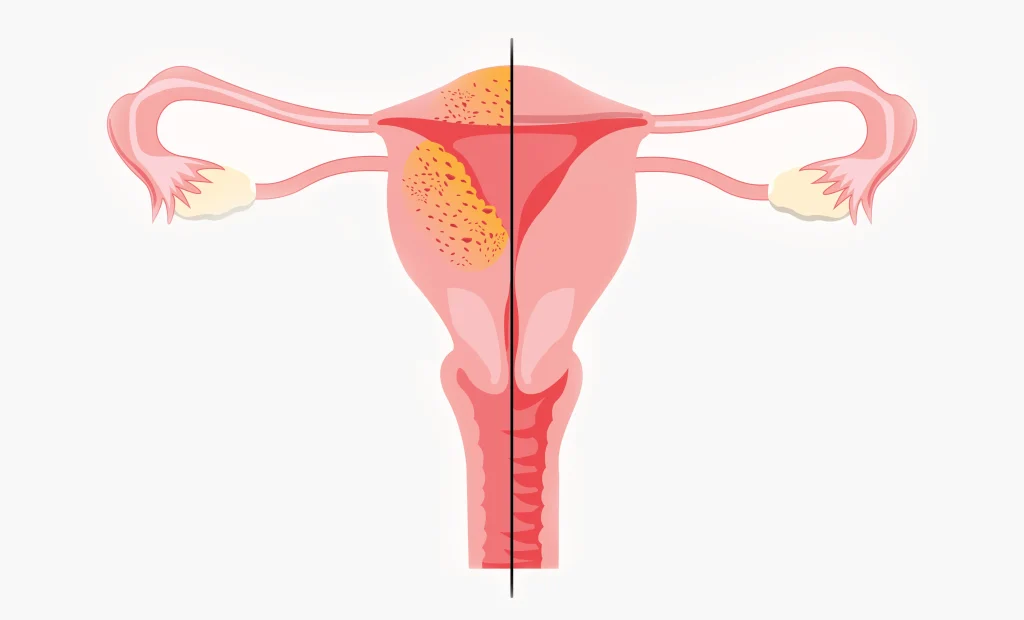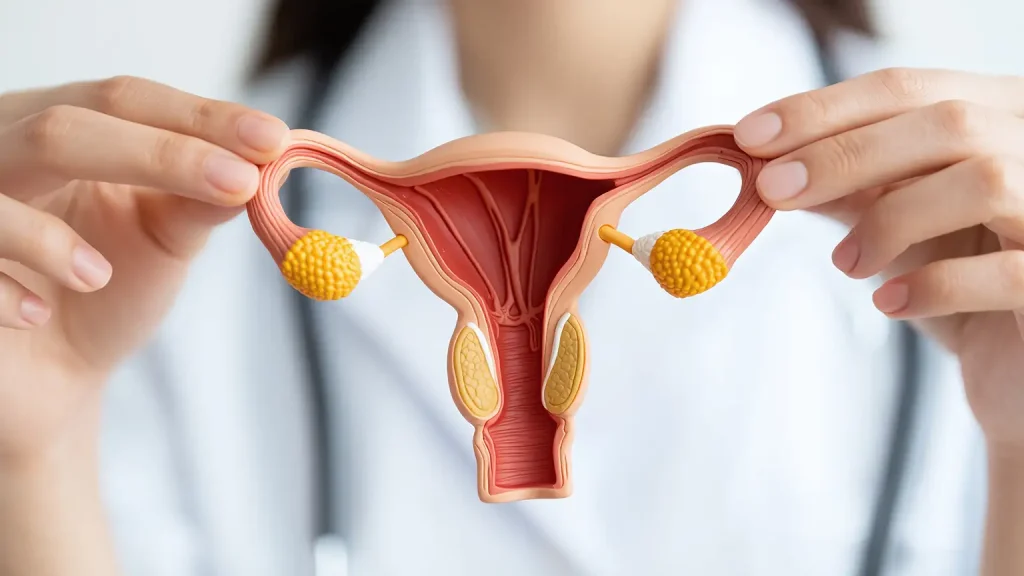Adenomyosis is a condition where the tissue that normally lines the inside of the uterus (endometrium) grows into the muscular wall of the uterus. This results in an enlarged uterus and can cause a range of symptoms that can significantly affect a woman’s quality of life.
Understanding adenomyosis, its symptoms and the available treatment options can help women manage the symptoms and the condition.

Adenomyosis Treatment
Adenomyosis is a condition where the tissue that normally lines the inside of the uterus (endometrium) grows into the muscular wall of the uterus. This results in an enlarged uterus and can cause a range of symptoms that can significantly affect a woman’s quality of life.
Understanding adenomyosis, its symptoms and the available treatment options can help women manage the symptoms and the condition.
Adenomyosis occurs when the endometrial tissue, which usually sheds during menstruation, becomes embedded within the muscular wall of the uterus. This causes the uterus to enlarge and can lead to symptoms like heavy menstrual bleeding, pelvic pain and menstrual cramps.
Adenomyosis is most commonly diagnosed in women in their 30s and 40s, often those who have had children. It is sometimes mistaken for other conditions like fibroids, but it has distinct characteristics that require specialized treatment.


The severity of symptoms varies from woman to woman while some women with adenomyosis may not experience any symptoms at all. Common symptoms include:
If you experience these symptoms, it’s important to consult a healthcare provider for an accurate diagnosis and appropriate treatment.
The exact cause of adenomyosis is not well understood, but several factors may contribute to its development:
Diagnosing adenomyosis can be challenging because its symptoms overlap with other conditions like fibroids, endometriosis and pelvic inflammatory disease. Common diagnostic methods include:
The doctor may feel for an enlarged uterus during a physical examination.
This imaging technique can help assess the size of the uterus and detect any abnormalities.
MRI provides a detailed image of the uterus and can help confirm the diagnosis of adenomyosis, especially in complex cases.
This involves inserting a small camera into the uterus to directly visualize the lining, and to assess intrauterine pathology.
A definitive diagnosis may require a combination of these methods; sometimes, a biopsy may be necessary.
Treatment for adenomyosis depends on the severity of symptoms, the woman’s age, whether she has completed her family planning and other health factors. Treatment can range from conservative approaches to more invasive procedures.
If non-surgical options are ineffective, surgery may be necessary, especially if the woman is suffering from severe symptoms or if other treatments have not worked.
You should consult a healthcare provider if you experience any of the following:
A doctor can discuss possible management approaches based on your symptoms and health goals.

At Pacific Healthcare Specialist Centre, we offer a range of treatment options for adenomyosis. Consultation services for adenomyosis are available. Speak to our experienced female gynaecologist for assessment and care planning.
If you suspect you may have adenomyosis or are struggling with symptoms, contact us today for a consultation.

Yes, adenomyosis can cause infertility in some women by affecting the implantation of an embryo. However, many women with adenomyosis can still conceive with appropriate treatment.
In some cases, adenomyosis may improve after menopause, as hormone levels decrease. However, for women who experience significant symptoms, medical treatment or surgery may be necessary.
No, although they share some similarities, adenomyosis and endometriosis are distinct conditions. Endometriosis involves tissue growing outside the uterus, while adenomyosis involves tissue growing within the uterine wall.
Recovery time depends on the type of surgery. Minimally invasive procedures like UAE may require only a few days of recovery, while more invasive surgeries like hysterectomy may require several weeks for full recovery.
Adenomyosis can be very painful for some women, especially during menstruation. The pain can range from mild discomfort to severe pelvic cramping.
Copyright © 2025 Pacific Healthcare Specialist Centre (Women's Clinic)